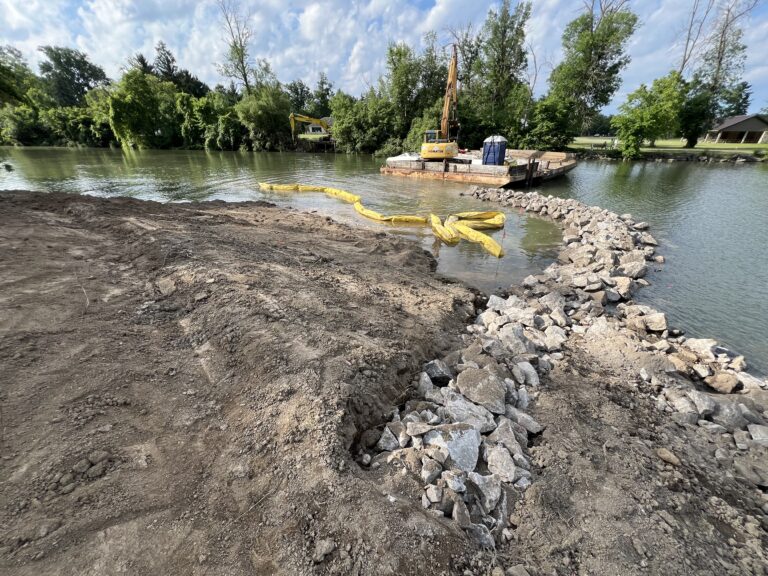Construction Begins on Buffalo Niagara Waterkeeper’s Ellicott Island Bark Park Living Shoreline Project
AMHERST, NY – Construction has begun on Buffalo Niagara Waterkeeper’s Living Shoreline Project on Ellicott Island Bark Park in Erie County’s Ellicott Creek Park. Heavy construction is expected to continue through early July, with plantings occurring throughout the 2024 growing season. Substantial completion of the project is anticipated to occur by October 2024.
The Living Shoreline design at the Ellicott Island Bark Park re-engineers approximately 15,000 sq. ft. of shoreline and riparian area to better cope with the ongoing active uses and water level fluctuations the site experiences. The project will utilize four nature-based strategies to create a functioning living shoreline along the southern tip of the island, and stabilize the water access area to improve water clarity at the popular access point.
- Stabilize the rapidly eroding shoreline using bio-engineering techniques
- Reduce stormwater pollution and erosion through green infrastructure practices
- Remove invasive/non-native plant species and establish diverse native plantings
- Create areas along the shore with conditions suitable for emergent vegetation establishment
- Reduce turbidity within project boundaries and adjacent shoreline areas by creating a stabilized water access point for dogs
“So much of the Niagara River Watershed has experienced shoreline degradation and riparian habitat loss,” explained BNW Executive Director Jill Jedlicka. “Our Living Shorelines model can help restore these impairments and moreover, build resiliency for the coastal and climate challenges ahead. As always, we don’t do this work alone. We are grateful for our partners at the Erie County Department of Parks, Recreation and Forestry and the NYS Canal Corp, funders in NYPA and NY Sea Grant, our trusted contractors in WSP Inc. and LDC Construction Inc, and of course, the stewards of this site going forward, Friends of Ellicott.”
Prior to revitalization efforts, the park was experiencing riparian habitat loss, rapid shoreline erosion, and high turbidity in shallow water areas due to several factors. High foot/paw traffic in riparian areas were resulting in vegetation loss, and persistent boat wakes throughout the summer were causing rapid erosion along the shoreline.
The impacts of these stressors were most apparent, and most severe, at the southern end of the island, which became the project focus area. After project implementation and establishment, native plantings will span the land-water interface and provide a wealth of environmental services to this area. Reduced erosion, nutrient uptake, stormwater retention, and overhanging vegetation will improve water quality and help combat the algae blooms that are common in the lower reaches of Tonawanda Creek.
In addition to water quality benefits, the project will also benefit the wildlife that rely on healthy shorelines to survive, such as freshwater mussels, warm water fish species, wading birds, waterfowl, beneficial insects, and pollinators.
Funding for this project has been provided by the New York Power Authority through the Niagara River Greenway Ecological Standing Committee and Niagara Relicensing Ecological Standing Committee. Additional support and funding provided by Erie County, and through an agreement with Cornell University in partnership with New York Sea Grant under Prime Agreement CM04068 from the New York State Department of Environmental Conservation.
DEC Region 9 Director Julie Barrett-O’Neill said, “Buffalo Niagara Waterkeeper’s Ellicott Island Bark Park Living Shoreline project, supported through the Niagara River Greenway and Niagara Relicensing Ecological Standing Committees, will benefit the environment by improving water quality as well as riparian and aquatic habitat for native plants, fish, freshwater mussels, and wildlife within the Niagara River watershed.”





